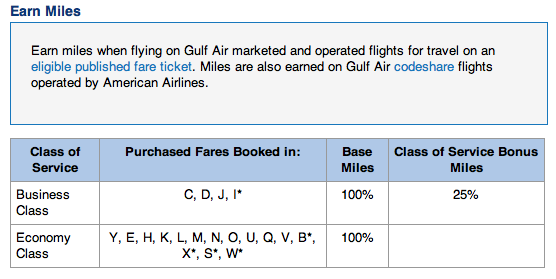
As discussed in Monday’s post, How to Accrue Frequent Flier Miles, earning and redeeming miles can be a great way to save money on your career break.
All frequent flyer mile (FFM) programs publish an awards table for the required miles needed for a flight redemption. The exact number, of course, depends on your origin and destination countries. For instance, at the time of this writing, U.S. Airways, a Star Alliance member, requires 60,000 miles to fly round trip from North America to North Asia while United Airlines, another Star Alliance airline, requires 65,000 miles for the same round trip flight.
Also, different frequent flyer mile programs group the same countries in different zones. United Airlines categorizes South Korea and Singapore in North Asia and South Asia respectively. Another frequent flyer mile program will group both countries in the same zone. It helps to check with the redemption table to where your miles can take you. Awards table changes are almost guaranteed to change for the worse, usually the required number mileage increases. It’s always best to use your miles before such changes are imposed because I rather have memories from a trip far away than looking at a black and white number on my computer screen.
Once you have the required number of FFM in your account, it’s now time to search flights for the availability of seats open to folks redeeming miles or known as award seats.
Your first inclination may be to check the airline’s website for availability. This isn’t wrong per se. It’s the easiest to do and if the airline website search satisfies your needs on the first try, you’re done. However, this will not be the case in nearly every circumstance.
Likewise with crediting miles from an alliance or partner airline, those miles can also be redeemed for flights on alliance and partner airlines. Most online booking engines don’t display the availability of partner or alliance member airlines. For instance, U.S. Airways, a Star Alliance member doesn’t display availability on Lufthansa or Austrian airline flights. To find availability on flights for U.S. Airways, you’ll have to call the airline agent to get this information and ticket it.
Routing Rules
Each frequent flyer mile program has different rules when it comes to redeeming miles – some allow you to book a one-way ticket for half the required miles for a round trip flight while others frequent flyer miles programs don’t allow it.
Travelers may miss out on travel opportunities because they are unaware of the routing rules, stopovers, and open jaw rules of their frequent flyer mile program. Most programs allow you to build in either one stop over or one open-jaw to an award ticket when you’re traveling from one zone to another, i.e. North America to Europe or North America to Asia.
A stopover is defined as a break in the middle of a journey before proceeding to your destination or origin. An example would be if a traveler wanted to travel to Bangkok, Thailand from North America, they could book NYC to Bangkok via Europe. Stopover in Europe for several weeks to several months, then proceed to their destination and return to NYC all for the same amount of miles as if the traveler booked a round trip NYC to Bangkok. A stopover can be schedule for as long as the traveler wishes, but the entire round trip itinerary has to be completed within a year.
An “Open Jaw” ticket is when you fly into one city and fly out of another. For example, let’s say a traveler booked a round trip from New York to London for X amount of miles. If the traveler wishes to tour the main continent of Europe, the traveler would then have to book a round trip flight on a budget airline to the main continent. Alternatively, for the same X amount of miles, a traveler could book an open jaw itinerary by booking a flight from NYC to London. Then book a flight from to NYC from Madrid all for the same amount of miles. All the traveler needs to book is a one-way ticket from London to Madrid versus a round trip ticket from London to Madrid on a budget airline.
Knowing these routing rules can be extremely valuable to get more travel as you would from the same amount of miles required for a round trip award ticket.
One-way tickets booked with miles don’t allow a stop over. For these cases, if it’s an international itinerary, it’s possible to include a connection of less than 24 hours in a city because a connection time of less than 24 hour doesn’t count as a stop over. It is technically considered a connection. Having 22 hours on the ground is plenty of time to leave the airport and explore the city.
For instance, traveling from Singapore to Seoul one-way, you could include a connection in Hong Kong by arriving on 15:15 flight and departing on a 13:10 flight the next day. This is a completely valid and legal connection that will not count as a stopover.
These short connections may not be conducive to career breakers traveling with children, but for those light packing travelers, it can provide an excellent way to experience a city.
With stopovers and open jaw itineraries on an award ticket, you’ll certainly make more stops along your journey, thus seeing more of the world we anxiously waited to take a career break for.
Things to Keep in Mind When Redeeming Miles
? Call the reservation agent of your airline to find availability of seats on other airlines.
? When booking an international award ticket, never ever book a round trip. Build in stopovers or an open jaw to stretch those miles.
? If you’re willing to do so and your itinerary permits, add a connection of less than 24 hours to explore a city along the way to your destination.
Mike Choi is known as the resident world traveler in his office and blogs about his travels at thefitworldtraveler.com. With his knowledge of FFM, he runs a part time frequent flyer mile consulting shop at iflywithmiles.com to help those with miles see the world. After reading books authored by Rolf Potts, Mike’s been inspired to take a career break to travel long term.













